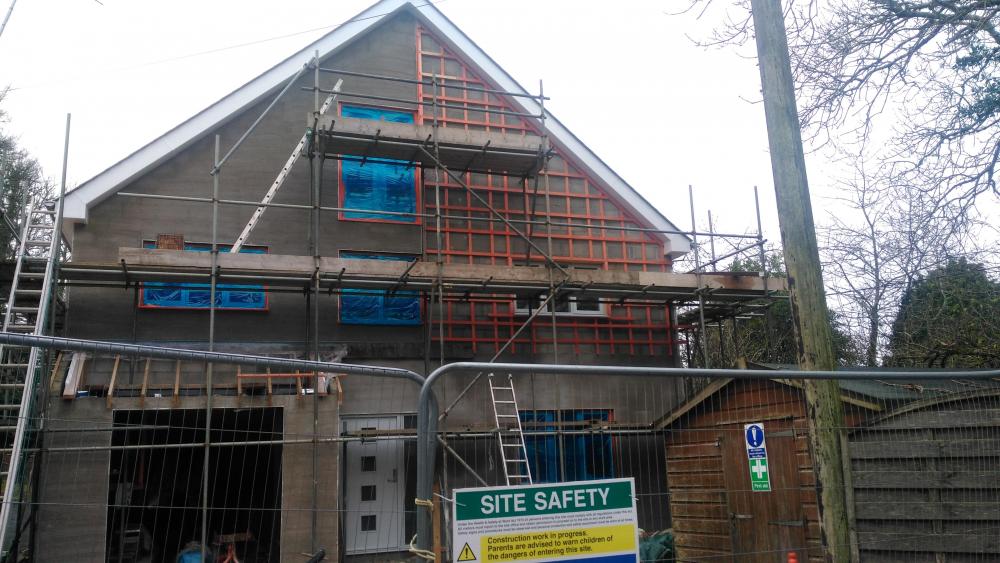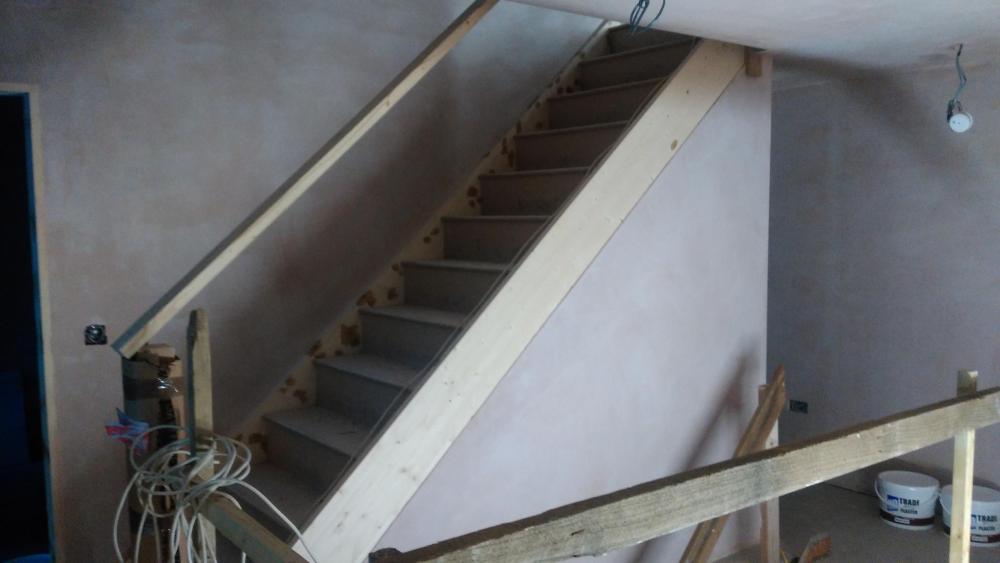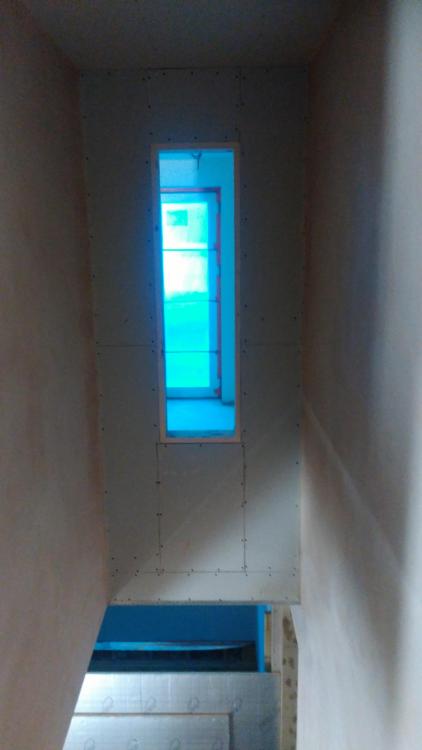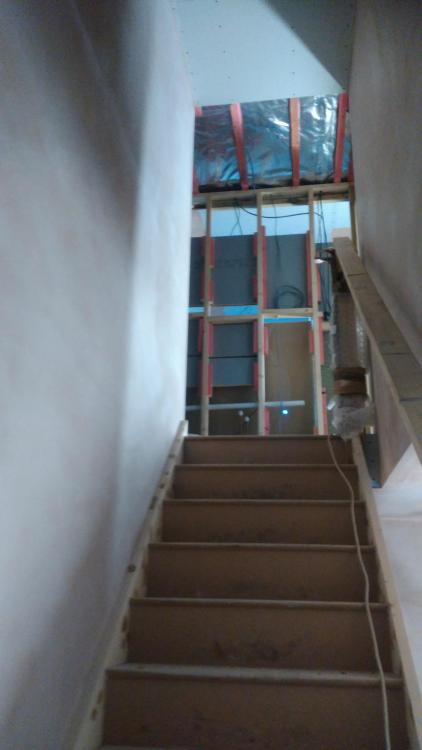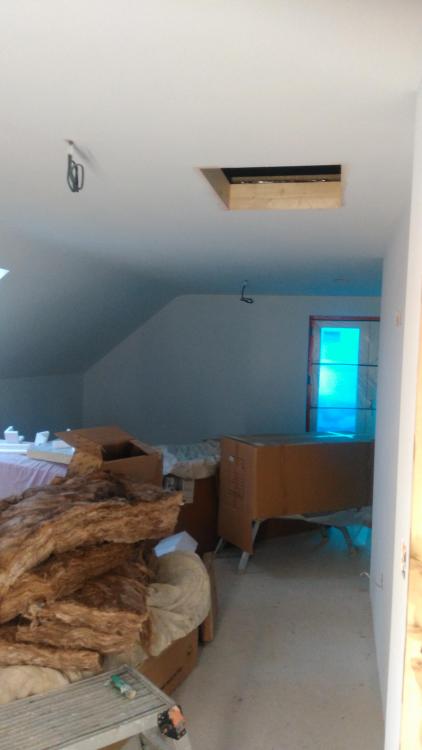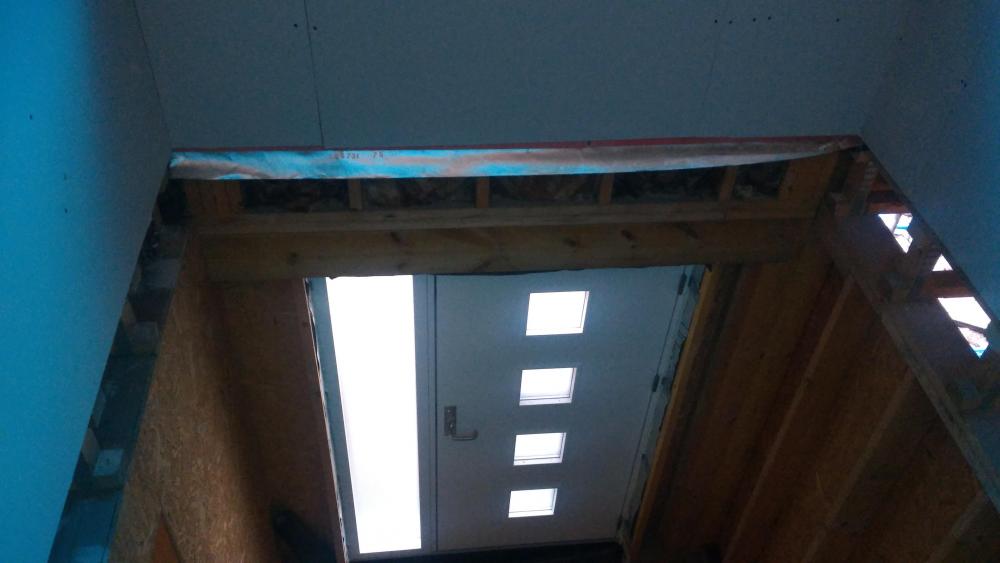Leaderboard
Popular Content
Showing content with the highest reputation on 12/29/18 in all areas
-
Postage is a bit less on this one - just because I know you hate to overpay https://www.ebay.co.uk/itm/10-X-6M-UNISTRUT-LENGTHS-41MM-X-41MM-PRE-GALV-SLOTTED-RUSTPROOF-WEATHERPROOF/173356720599?hash=item285cdda1d7:m:mG19p5Oj7xPYbVQK22gXREw:rk:64:pf:02 points
-
I wouldn’t bother relying on Loxone or anything similar to control the actual flow temperatures - they are too long a time constant to use with something that can do 0.01c changes. Just get it to do the on/off and then let some decent thermostats do the room temperature control. And trusting an EPC consultant to design your heating system is like asking @Nickfromwales to do your interior design .....2 points
-
2 points
-
Is that all, come on I’m bored stiff sat here pictures of the big hole please picteres of progress c,mon c,mon I’m about to kill one of the in-laws if they ask me another stupid question about my polystyrene house.2 points
-
An introduction to myself, my plot and and my self-build can be found in the following thread: Having carried out one self build which turned out to be a lovely family home, we were keen to do another now that both our children had left home. We were drawn towards Passivhaus and started looking on the Southern side of the English Welsh border around 2015. The plot we eventually purchased was in Shropshire and one of 9 self-build / custom-build plots. The plots have a design code but there is a lot of flexibility within the design code and energy efficiency is encouraged. All infrastructure work (roads, lighting, mains services etc) are being sorted out by the developer which removed some of the risk. Timetable to the start of the build was as follows: Oct 2017 - Offer accepted on plot. Architect appointed. The architect was somebody who had already provided feedback on some previous plots we had looked at and we felt was very much in tune with our own ideas. Feb 2018 - Initial Design completed. Pre-App submitted to planning. Jul 2018 - Full Application submitted to planning Aug 2018 - Completed on plot Sep 2018 - Application approved by planning with one condition Oct 2018 - Started Groundwork / Landscaping. Planning condition discharged. So, over 3 years from starting to look for a plot to starting with the build which seems to be around par for the course. The house as mentioned previously is Passivhaus using a Passivhaus raft foundation and a timber frame that is being built on site using I-Beam / Glulam Beams. It is very different from my previous self build which was brick / block.1 point
-
I've used it for years, it's pretty much the standard way of assembling aircraft fasteners, which are very often cad plated steel securing aluminium alloy components. I've also used it when fixing things to alloy masts and never seen a corrosion problem. The nice thing about chromate paste is that it coats every bit of the fastener, plus it tends to seal against moisture ingress, both of which make it more effective, IMHO, than just using an insulating washer.1 point
-
Yep a little. That’s why the fixings are designed to not be tight - they allow the panels to move slightly as the frames expand and contract.1 point
-
If you want your pumps and valves operating 60 times a minute then yes. Best get to the NASA boot sale this coming Sunday1 point
-
1 point
-
@epsilonGreedy I was trying very hard not to sound harsh, but the reality is that you are more likely going to give a list of things to fix or think about not things that you like. There are quite a few good aspects to the house such as the upstairs hall arrangement and windows on the lounge and bedroom 2. It is not a small house and as you say a developer may go down to a very small size for a 4 bedroom house. However, once you start having a large eat in kitchen/family room then sizes tend to approach the 170-180sq metre level. In some ways the house may give too much space to the master suite and kitchen and not enough elsewhere, but a lot of these are personal decision about how one wants to live, assuming that these are what the poster wants then the other rooms need a little more space. The dressing room is very large for example and much larger than the bedroom 4/study, although I agree with your point that you don't want to squeeze in too many rooms and in general this house has the rooms that you would want in this type of house. You are right the hall is not actually small, but still more space in front of the door would be nice. Still I think a large point of building your own house is to do something better than you could just buy and I think that there is plenty of room for improvement here.1 point
-
As Joe90 says, roofing felt is a better way of preventing condensation. You may still get water condensing on the underside of the sheets, but the breather felt will prevent it from dripping back down into the garage.1 point
-
There is absolutely no way you should scrimp on having no mixing valves on the manifolds, especially as you'll have different floor constructions. You will need to have a very fine tuneability for the basement and the ground floor, and trying to achieve that with one global flow temp will be impossible. Do not cut corners here. Do not use your potable water TMV for heating, you'll need a Heating type Reliance valve for that, two totally different beasts. For flow control to the manifolds you use the reliance valve and a pump to circulate between the cylinder and the manifolds. You should be fitting a 2-port zone valve to each leg to stave off unwanted convection heat flow and to be able to isolate each leg according to whether or not that particular manifold is being used. If you've already run the 22mm as a single pair then you simply put the 2-ports at each manifold. The cables you require to control these should be found in the manifold wiring centres, if you've fitted them. If not, get cables in now. The UFH temp is controlled by the mixing valves on the manifolds, ( 20oC to 60oC range so very accurate in a PH ), and the flow and return temps are shown on the manifold temp gauges normally. If you don't have them then cheapo Chinese digitals are available or chuck in the thermistors and reference off the HA system. Ok, much to @PeterW's entertainment I am going to retract my statement re deriving anything other than cold mains uplift from the cylinder. I looked at the link and its just a domestic hot water cylinder not a TS so is completely unfit for gleaning various services / inputs to / from. Too many good films on yesterday is my excuse, with 'Where Eagles Dare' being the highlight. With the mention of TS I dropped into default and assumed the coil was a DHW top mounted. Hydraulically separating the UFH from the main body of water is a step in the wrong direction, as you'll not be able to use the F&E tank to service that circuit. You'll then need to fit a separate fill loop, expansion vessel, pressure relief valve and pressure gauge to fill up and maintain pressure in that circuit. Is the F&E tank higher than the upper floor of UFH? Adding a SA seems the easiest way of dealing with DHW as they're compact and don't need an overflow ( discharge ) arrangement like an UVC does. A 6 will suffice if you're heating it from the gas boiler, but you'll probably be better off with a 9 ( £300 more then the 6 so not a great uplift when you look at the incremental price increase ) so you have somewhere to dump PV in the summer ( when you don't want to heat the buffer ).1 point
-
1 point
-
1 point
-
You can only claim for a simple hanging rail and a shelf above. From VAT notice 708: The wardrobe should feature no more than a single shelf running the full length of the wardrobe, a rail for hanging clothes and a closing door or doors. Wardrobes with internal divisions, drawers, shoe racks or other features are furniture and are not building materials. If you have added other things leave them off the reclaim.1 point
-
Zoning rooms gets challenging, but zoning different floors and especially with different floor composition is essential.1 point
-
Hi Ian, @TerryE makes many good points that I won't repeat. The main question is can you finance the build of two houses without selling your existing house. This could easily take two years or more. Also I think many people are finding that the standard estimates of build costs are too low and construction costs often come in higher than expected. Partly this is due to people raising the specification of houses that they do not plan to sell, but it may mean that this is not as profitable an endeavour as you expect. Assuming that you have all the financial and planning aspects in place - Who designed the layout of the house? The layout itself is OK, but the house is simply too small for the number of rooms inside it. This has resulted in may rooms that would feel quite cramped and the fact that there are no cupboards at all in the house, only a dressing room and utility room. Assuming that the budget is not that tight and as the originally approved house was 300 square metres, if you like this design I would take it and basically upscale it by 10-15%. Particular things I would want to address, they are more comments about the liveability of the house which at the moment is poor and things to think about in any house design- 1. You need a hall cupboard for coats shoes etc. 2. Bedroom 4 is too narrow. I would think it needs to be at least 2.2m wide. 3. The WC is very small, and lacks a window. If you made Bedroom 4 larger I would cut the WC into the front of it to have a small window. 4. I would look to have a larger space between the front door and the stairs to allow space to bring visitors into the house. 5. The kitchen design has around 11 linear metres of cabinets/counter tops plus a large island. This could be more than needed for the size of the house and will increase costs. The island is too large for the space, it will feel cramped with just a 1m space all the way round the island. 6. You might want to get more light into the kitchen area. 7. The dining/family room area is too narrow. A 1m wide dining table needs at least 1m all the way round it, ideally more to allow for people pushing chairs back from the table and people to get around it. Sit on a chair at a table and push it back then see how much room it takes up. With this layout it will be very difficult to walk past the table to the sitting area and the table/chairs are likely to be in your way as you walk into the kitchen, ideally you want a nice space as you walk into a room to not feel cramped. 8. Bedroom 2 and 3 need built in wardrobes. 2.855m is tight for a bedroom. A double bed is 1.9m long and a kingsize 2m long. You can add 10-20cm if they have any kind of frame or just for the duvet overhanging the end of the bed. You will end up with around 80cm between the end of the bed and the wall. This is a tight space, ideally I try to make any spaces that you walk through 1m wide at least. 9. Unless you plan to use a combi boiler you will need a cupboard for a hot water tank and again a cupboard upstairs for bedding, towels etc would be useful. In some ways this reminds me of a developer built house where they try to squeeze the maximum number of rooms into the least space possible. I think you can do better designing a house for yourself to live in.1 point
-
Ian can you explain what you mean in the first sentence? I've read through it a couple of times and am still confused about the context. Has the plot PP for two houses or one of 300m²? Or one of 300m² + one other? You are mentioning construction techniques such as ICF and box trusses, but this will seems out of order to me. What are your requirements and financial constraints? Doing a self build is in general as expensive or more expensive than buying a comparable new build because it is a one-off and you don't have any of the economies of scale that a standard builder will have. Like many here who have been through this journey, it is extremely stressful and hard work. If all goes well then you will end up with property that is built to your specific requirements and attention to detail, so the self build premium might prove worth it for you, but this isn't the case for a build to sell. The other great complexity here is the financial management of the entire process, it's optimisation and working within imposed financial constraints; again this is really hard for a single self build but the issues more than double for a two plot development. We were extremely lucky in our financing and in retrospect we could not have found a better deal, but finding it also involved a lot of work and stress. We had a village setting and decided to split our plot and build a retirement home then sell our previous house. This sounds simple in principle: get financing; live in the old house; build the new one; sell the old one and move in. Again in retrospect, the dice couldn't have rolled better, but the whole process involved sleepless nights and so much work. The cost of build invariably mounts above your initial innocent budget and so it is really hard completing within your in-place financing. In our case, our old house was a 17/18C farmhouse in the centre of a village (the plans had been sold and converted to an estate that lay to the back of the plot long before we bought it) so it was a niche sale that really needed the adjacent new build complete to be sellable at anywhere near the market price. Lots of catch-22 variations in executing this. Luckily we are retired and had the time and skills to do a lot of the work ourselves which meant that we could offset costs and keep a very tight control on quality. My advice is to sort out the principles first and make sure that they are derisked first. What are your requirements? How are are you going to finance them? Etc. A few specific points: The second plot. As I said doing this yourself will double the financial burden and more than double the stress. Another alternative is to sell it with outline PP and leave this to a builder experience in doing such 1-off infill developments who can finance and manage this. However this has risks in itself as you no longer own and control the second development and you might regret having to live next to the outcome. Future prooofing for loft conversion. This rarely makes sense IMO. If you are going to do this then do it properly at the initial build stage. Incorporate the space as a warm space within your approved plans, including access, fenestration etc., but leave the space unfinished - a blank tablet. This will add little to the cost, but far more to the value of your house and give you more future options if you find yourself with an extending family or even a stroppy teenager that you need to share the house with. A ridge RSJ and full structural roof joists plus a couple of roof lights will only add a few £K to the overall build costs. Where are you going to live during the build? For most people using the capital on the existing property is an essential component of financing the new build. We had fully paid off on our farmhouse, and I had enough retirement income to get a mortgage on it to finance the whole project and a small BSoc that were happy to do this, but many members here end up living onsite in a caravan for most of the build (and some plan in an early fit-out and "legal inhabitation" of a couple of rooms to get out of the caravan). We started our journey in 2013 with an initial decision to split the plot and self build. In retrospect our initially invisioned timescales were laughably naive. Add at least a year to your anticipated timeline, and then work out how this can be best used to derisk and to optimise. Crashing timescales invariably costs £££s and lots of them. So work out all of your major issues and risks and have sound outline solutions in place as soon as practical. Impossible projects never become suddenly possible by magic. Doing a self build is a bit like skiing with an avalanche behind you.1 point
-
So where are we now. Blockwork keeps on going, we've got all the *big* lintels in place now so the guys can just keep on plugging on , each course is shorter than the last now. Chimney stuff is here, sills are here (and look gorgeous, really fine finish on the concrete) and we're lifting the big Keylite windows into place tomorrow. SHMBO needs to be making final decisions on the position of sanitaryware and then it'll be first fix city. Window guys return 9th, roof stuff arrives that week too. Moving on...1 point
-
Aaaaah, stop whining dad. @janelondon, @lizzie and me we are all nosey as Hell. One of these will sort you out. In my case it stopped a bill for £9000 dead in its tracks. (Evidence of malpractice / criminal negligence) Even a Luddite like you can make one work...1 point
-
I have a shed very similar to yours with anti condensation box profile roofing sheets. I still get condensation on the roof lights which drips internally on a frosty morning. So any internal ceiling needs to be able cope with this to some extent. Do you have this issue in the winter? If you heat the internal space then I would expect the condensation to get a fair bit worse on a cold morning as the warm humid air rises to the cold roof. So maybe consider an internal vapour barrier to help with this? I'd be inclined to Insulate the ceiling with PIR or something non absorbant.1 point
-
If your somewhere remote it would probably pay to use materials that are available locally no point specifying something you can’t buy can you find some second hand double glazed windows and a door no point making a horrible environment just because it was cheap, window , door, pile of 4x2 , pallet of plywood, lots of rock wool insulation, electrics should be no problem for £30001 point
-
Really wouldn’t bother with the hassle of pallets unless you have unlimited time and unlimited pallets. They can be useful for making a raised floor if you have enough of the same ones, but will still need 3x2 to keep them square. I’d do a simple structure of 3x2 clad with OSB on the inside then stack around with straw bales - not much will like to live in those tbh as they are too dense. 6x2 as ceiling joists resting on the top walls will give you plenty of strength. If you need a “window” then create a gap in the bales and bridge it with a couple of scaffold boards as a lintel - as long as it’s not got a full bale over the boards it should be fine. No need to trim the ends - just offset the stacking and pin them together with lengths of broom handle. Ceiling insulation would be best with something like cheap fiberglass or Rockwool or whatever your local BM has a few rolls of.1 point
This leaderboard is set to London/GMT+01:00






